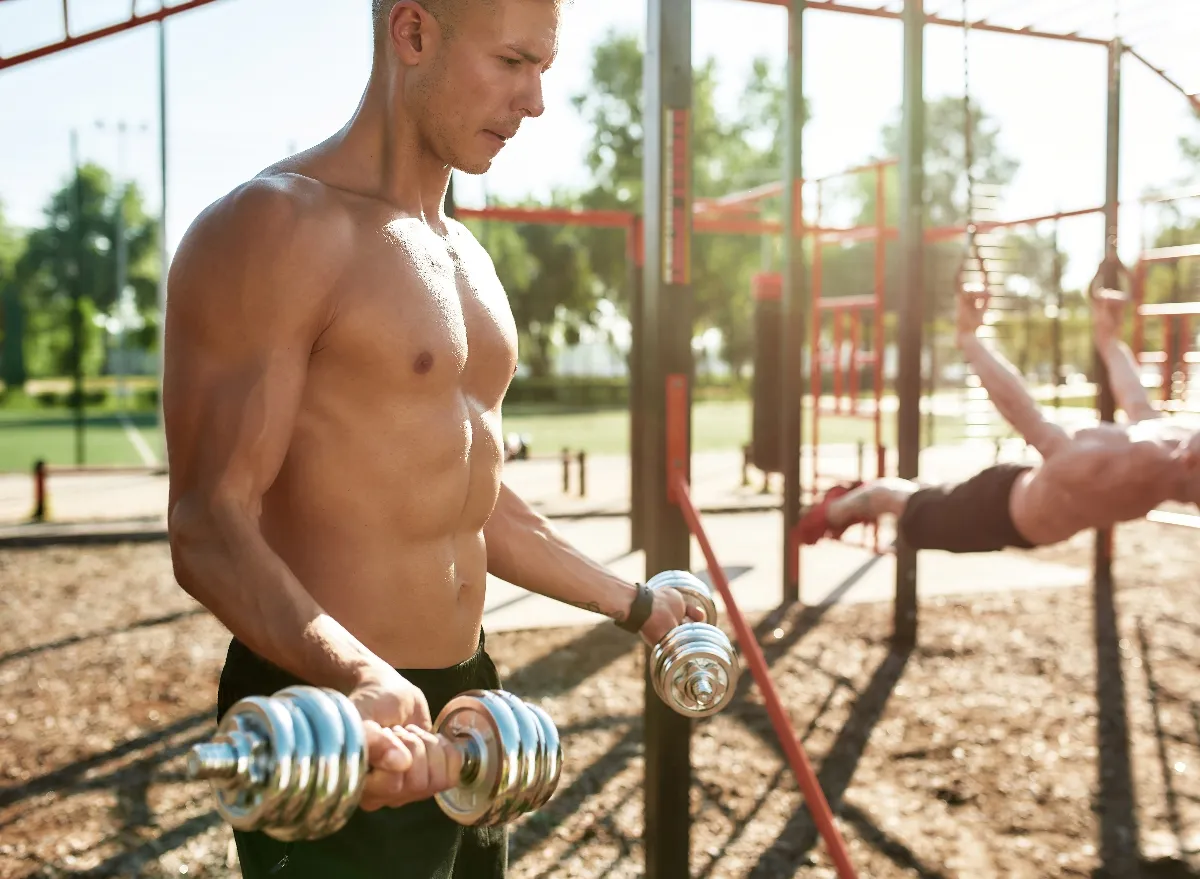Strength Training To Build Muscle & Strength? Here's How Heavy Your Weights Should Be

Embarking on a journey to build muscle and strength through strength training requires more than just dedication—it demands a strategic approach to your workout routine. One key factor that often perplexes my clients is determining the appropriate weight to lift. In this guide, we break down the essential considerations for selecting the right weights to optimize your strength training for muscle growth.
Starting a strength training journey to build muscle and enhance strength requires a thoughtful approach to weight selection. Whether your focus is on hypertrophy or strength gains, understanding your repetition range, calculating your 1RM, and selecting appropriate weights for different exercises are key elements to success. Embrace the principle of progressive overload, and remember that a well-rounded approach, combining challenging weights with proper form and consistency, is the foundation for achieving your muscle and strength-building goals.
Understanding Your Repetition Range

A repetition range refers to the number of times you perform a specific exercise in a set. In strength training and weightlifting, a set is a predetermined number of repetitions (reps) of a particular exercise.
Reps for Muscle Building (Hypertrophy)
When the primary goal is muscle hypertrophy or building mass, it's recommended to work within a moderate rep range. Aim for 8 to 12 repetitions per set. This range promotes muscle fatigue and stimulates hypertrophy, ensuring your muscles experience the necessary tension and stress to encourage growth.
Reps for Strength Building
To prioritize strength gains, lower rep ranges with heavier weights are ideal. Target 4 to 6 repetitions per set. Lifting heavier weights engages your central nervous system and prompts adaptations in muscle fibers, leading to increased strength over time.
Determining Your One Repetition Maximum (1RM)

A One Repetition Maximum (1RM) is the maximum amount of weight that a person can lift for a single repetition of a given exercise. It is a common metric used in strength training and weightlifting to assess an individual's maximal strength for a specific movement. The 1RM is often used to determine training loads for various intensity zones and to track progress in strength training programs.
Calculating 1RM
Before diving into strength training, it's beneficial to estimate your one-repetition maximum (1RM). This involves finding the maximum weight you can lift for a single repetition. Many formulas, such as the Epley or Brzycki method, can help approximate your 1RM based on the number of reps and weight lifted.
Using Percentages of 1RM
Once you have an estimate of your 1RM, you can tailor your strength training program using percentages. For hypertrophy, working at 65 to 75% of your 1RM is effective. For strength gains, aim for 75 to 85% of your 1RM. Adjust the weight accordingly to stay within the desired percentage range for each set.
Selecting the Right Weight for Different Exercises

Selecting the right weight to lift is a critical aspect of any effective and safe strength training program. It impacts the effectiveness of your workouts, helps prevent injuries, and plays a key role in achieving your fitness goals. Always prioritize safety, proper form, and gradual progression to ensure a successful and sustainable strength training experience.
Compound Exercises
Compound exercises, such as squats, deadlifts, and bench presses, engage multiple muscle groups simultaneously. For these, choose a weight that challenges you within the specified rep range while ensuring proper form is maintained. Gradually increase the weight as your strength improves.
Isolation Exercises
Isolation exercises, like bicep curls or tricep extensions, target specific muscle groups. Opt for a weight that allows you to complete the desired reps with controlled and precise movements. Focus on the mind-muscle connection to maximize the effectiveness of these exercises.
Progressive Overload

Progressive overload is a fundamental principle in strength training and fitness that involves gradually increasing the demand placed on your body to stimulate continuous improvements in muscle size, strength, and endurance. The concept is based on the idea that for your muscles to adapt and grow stronger, you must consistently challenge them with increasingly heavier loads over time.
Implementing progressive overload is essential for preventing plateaus in your fitness journey. Without consistent increases in the demands placed on your muscles, your body adapts to the existing workload, and the stimulus for growth diminishes. By progressively challenging yourself, you create a continuous cycle of adaptation, growth, and improved performance.
Gradual Progression
To continually build muscle and strength, adopt the principle of progressive overload. This involves gradually increasing the intensity of your workouts over time. Add weight progressively, but ensure you can maintain proper form to prevent injury.
Listening to Your Body
While guidelines and percentages are valuable, listening to your body is equally important. Pay attention to how your muscles respond to different weights and adjust accordingly. Striking a balance between challenging yourself and avoiding injury is crucial for long-term success.









